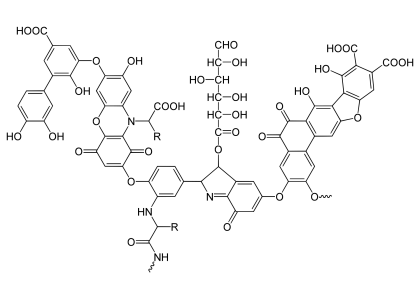Sodium Humate as feed ingredients/additives/supplements
Organic Sodium Humate "Raise Without Antibiotics’

Why Do Antibiotics Require Caution?
We are all concerning that antibiotics may be used too often.1 A new analysis2 published as a letter to the New England Journal of Medicine by officials from the Centers for Disease Control and Prevention (CDC) and IMS Health shows that U.S. doctors are prescribing enough antibiotics to treat four out of five Americans every year, and the authors say the data suggests they are being overused in humans. Health care providers prescribed 258 million courses of antibiotics in 2010. A more recent 2013 CDC report3 found that half of prescriptions given to people are unnecessary.
In general, the ability of bacteria to develop defenses against assaults from antibiotics makes ongoing research critical.
Like the rest of the animal kingdom, species of bacteria have many different characteristics that vary widely. Some antibiotics can be extremely effective against certain bacteria but may not work to treat other bacteria. That’s why it is important to treat problem bacteria with the correct antibiotic.
Experts say that giving high doses of antibiotics to treat infections – an approach long thought to be the best strategy to “knock out” an infection – may actually trigger some bacteria to become resistant. In simple terms, in the face of a threat to survival, some bacteria put up their best defenses. Other bacteria are naturally resistant to certain antibiotics.
Another reason for caution: when an antibiotic is administered, it impacts the entire population of bacteria in the body. When some bacteria that are susceptible to the antibiotic are destroyed, other bacteria may thrive because there is less competition and they begin to multiply. Sometimes, these remaining bacteria are resistant to one or more antibiotics and a larger problem can develop.
Resistance develops in bacteria when they are challenged, but not destroyed, as they might be with the wrong antibiotic, with too low a dose or too short a course of treatment, which is why antibiotic prescription bottles often say “Finish all medications.”
Veterinary Use and Oversight
Because livestock and poultry are consumed for food, regulatory and veterinary oversight of the use of antibiotics is particularly strict.
Like people, animals become ill and can develop conditions similar to common human infections like pneumonia, skin infections and others. Livestock and poultry are no different. Not providing antibiotics when needed would harm a sick animal’s well-being and could cause a more widespread infection in other animals in a home, herd or flock.
Because livestock and poultry are consumed for food, regulatory and veterinary oversight of the use of antibiotics is particularly strict. The Food and Drug Administration’s (FDA) Center for Veterinary Medicine must approve all antibiotics used for food producing animals. There are four broad categories of antibiotic use:
Treatment — antibiotics are given to treat an animal with a diagnosed illness.
Control — antibiotics can be given to control the spread of an illness on a farm or ranch in the face of an outbreak.
Prevention— because livestock and poultry share water and feed troughs and seek close contact with one another by licking, laying on each other and even rubbing snouts and noses, illnesses can spread rapidly. Sometimes, veterinarians recommend using antibiotics to prevent diseases at times when livestock are particularly at risk, like during weaning from the mother. Swift, preventive actions often mean a livestock will receive fewer antibiotics than they would have if they had not received a preventive dose.
Growth Promotion— The use of some antibiotics can destroy certain bacteria in the gut and help livestock and poultry convert feed to muscle more quickly causing more rapid growth. This class of use has been the subject of controversy and scrutiny, and in 2012, FDA4 asked livestock and poultry producers to phase out use of antibiotics for growth purposes. The American Meat Institute (AMI) and its members support FDA’s decision.
Medical, Veterinary and Regulatory Oversight
In 2012, FDA asked livestock and poultry producers to phase out use of antibiotics for growth purposes. The American Meat Institute (AMI) and its members support FDA’s decision.
“Right now the most acute problem is in hospitals. And the most resistant organisms in hospitals are emerging in those settings, because of poor antimicrobial stewardship among humans.” Thomas Frieden, MD, director, Centers for Disease Control and Prevention
Antibiotics, whether used in humans, livestock or poultry, are overseen by physicians and veterinarians to ensure that they are used appropriately. While many in the public health community urge doctors to use restraint in prescribing antibiotics, many physicians report that patients demand them even when they are not warranted and they feel pressured to satisfy their patients.5 According to the Centers for Disease Control and Prevention (CDC), “Every time a person takes antibiotics, sensitive bacteria are killed, but resistant germs may be left to grow and multiply. Repeated and improper uses of antibiotics are primary causes of the increase in drug-resistant bacteria.”
In September 2013, the CDC released a new report called Antibiotic Resistance Threats in the United States. According to the report, 50 percent of all the antibiotics prescribed for people are not needed or are not optimally effective. In releasing the report, CDC Director Thomas Frieden, MD, said, “Right now the most acute problem is in hospitals. And the most resistant organisms in hospitals are emerging in those settings, because of poor antimicrobial stewardship among humans.”
The report expressed concern about the use of antibiotics for growth promotion in animal production and said they should be phased out, an effort that is underway and that the meat industry supports.
Clearly, it is essential that veterinarians exercise their medical judgment and careful oversight of antibiotic use in livestock and poultry production. FDA recently took steps to expand the role of the veterinarian in managing antibiotics given to food-producing animals. In addition, antibiotic use for growth promotion is being discontinued. AMI and its members support FDA’s efforts to increase veterinary oversight of all antibiotic use.
Despite claims to the contrary, data show limited overlap in antibiotics given to humans and animals, which offers additional protection.
Residues Monitored by USDA
Whenever an antibiotic is given to a food animal, a strict waiting or “withdrawal” period is required before that animal can be processed into meat or poultry. USDA’s Food Safety and Inspection Service (FSIS) conducts a monitoring program to ensure that antibotics are effectively eliminated from animals’ systems and that no unsafe residues are detected in meat and poultry.
When illegal antibiotic residues are detected, AMI and its members support rapid trace back and corrective actions, like removing that product from the food supply and providing immediate feedback to producers, to correct the problem.
Overall Trends in Use
Meat and poultry producers recognize the confusion and concern that exists around antibiotic use in meat and poultry production.
Media reports often cite the total amount of antibiotics used in animals in a given year and sound alarms if it reflects an increase over the previous year. However, looking at the total volume used is a poor measure of appropriate use because livestock herds and poultry flocks shrink and expand with feed costs and other marketplace factors. Larger herds and flocks will, inevitably, require more medical treatment. In addition, if a contagious disease has impacted our herds and flocks, more antibiotics may be required that year.
So what is the overall trend? There is no question that antibiotic use in livestock and poultry production is declining on a per animal basis as meat and poultry producers respond to public concern and as antibiotic use for growth promotion is phased out voluntarily at FDA’s request.
Choices in the Marketplace
All meat and poultry products are inspected before they are sold. This should provide assurance that products are safe. However, some consumers with concerns prefer to buy other products derived from animals never given antibiotics. Common choices in the market place include:
Organic — the National Organic Program (NOP) requires that livestock or poultry are never given antibiotics. When an animal becomes ill on an organic farm and requires antibiotics – an event that is not unusual – that animal is treated and sent into a conventional production system and will not bear an organic label.
‘Raised Without Antibiotics’ or Similar Claim — these products are derived from animals raised without antibiotics. While this parallels organic production, these products may be derived from animals raised on farms that are not certified organic or that would not meet the NOP standards for other reasons.



